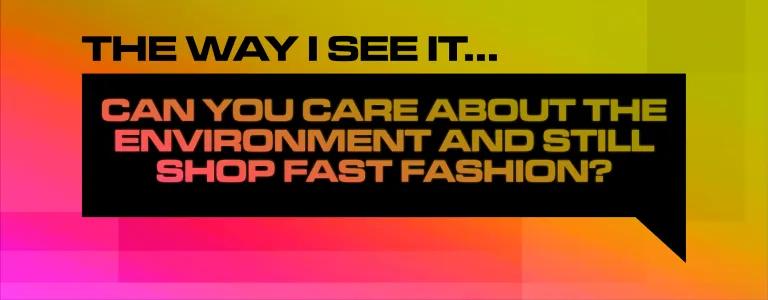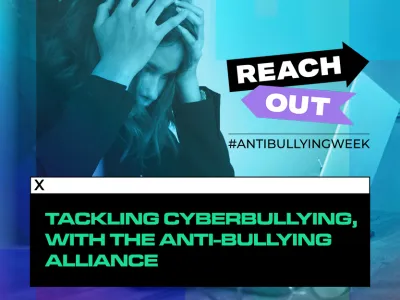
Twisi: Can You Care About The Environment And Still Shop Fast Fashion?
Include this article in your Skills Builder Journal. It could help you develop...

Writers’ Club member Beth gives her opinion about if its possible to care about the environment and still shop fast fashion...
A common issue that constantly surfaces in the media, is high street brands and their adverse impacts on the environment. Despite this, lots of the UK population still purchase their fashion from high street brands such as H&M, Primark, or Zara. These brands have proven to be so popular for a number of reasons; they are cost effective, convenient, and consistent in their quality.
For the average consumer they provide them with the fashion they need, at a reasonable price, with no surface level issues. However, not much digging has to be done to discover the problems beneath. These high street brands are associated with many issues; greenwashing, textile waste, CO2 emissions, water pollution and ethical concerns. These brands support fast fashion which, in its very nature, requires clothes to be made quickly at low costs. The sad reality of this means these clothes are made to meet the consumers satisfaction by sacrificing environmental and ethical practices.

The main issues usually occur in the supply chains, where worker conditions are often extremely poor and the manufacturing practices are often environmentally damaging. Despite some of these brands making ‘sustainable’ or ‘ethical’ ranges, often the manufacturing conditions of these products are still unfavourable. For example H&M (the second largest global retailer) has a ‘conscious’ range, however the materials they use are still not eco-friendly and they still run under an unsustainable, fast-fashion business model. Although H&M have initiated a lot of pledges and goals to reach certain standards, like most high street brands, they are a long way from reaching these.
Many brands, new and old, have been set up as eco-friendly ethical brands. These brands focus on sustainability and slow fashion, rather than fast fashion. Often these brands will have less range and do not follow trends, but they will provide all the necessary clothes the average person needs. Examples of such brands include Kotn, Able, Boden, and Cuyana. You can find more examples here. Each company will often have a specific selling point or project that they contribute to, for example providing jobs, or ending poverty in a specific area.
By investing in these brands, you invest in good quality, long lasting, ethical, sustainable apparel that makes a stand against fast fashion. Sounds like a no brainer, right? However there is one major issue - the price. Most of these brands cost significantly more than the average high street brand. For most people, this price increase is simply unaffordable. Especially in recent times, money is often tight and isn’t best allocated on clothes, when you could spend way less on high street brands instead. It could be argued that buying from slow fashion brands is an investment, as clothing typically lasts longer and it provides a longer term investment to the environment. While this is idyllic reasoning, for many people across the UK this cannot be the reality.

In recent years, people have been embracing different ways of buying clothing. Second hand purchases have become popular, meaning clothing is being reused and loved again. It means less CO2 emissions, as new clothing products don't have to be made and less clothing ends up filling up landfill. Second hand pieces are often in perfect or near perfect condition and yet they are sold at a fraction of the original retail price.
More traditional ways of buying second hand clothing include thrift stores and charity shops. However, due to a rise in trends to do with thrifting, often thrift stores are more expensive than they should be. Newer, digital ways of selling second hand clothing have also been emerging, such as Depop. Depop allows anyone to sell their pre-loved clothes on a platform similar to social media forms such as Instagram. People can then explore their feeds, search for items, or search for brands/accounts, to find the perfect piece of clothing for them. Platforms such as these also give a space for creative individuals and small businesses to sell their products. You can buy beautifully handmade clothes, made in the UK, or you could choose to buy second hand fashion from better known brands. Although shipping will often have negative environmental effects, by buying second hand, you significantly lessen your carbon footprint and support smaller, more ethical entities.

In recent times, consumers of fast fashion have often come under heavy criticism and scrutiny. As considered there are many alternatives to high street brands, but often these alternatives are accompanied by many other problems. They can be pricey and impractical and often have negative offsets themselves. If bought reasonably and in low quantities, clothes from high street brands aren't always the crime they're made up to be. If you buy a piece of clothing from the high street, that will be worn frequently for many years, it is not awful. Besides, pressure can still be put on companies to change practices even while their products are still being brought. However, regularly buying multiple pieces every few weeks that don't get worn much before being thrown away is a waste of money, waste to the environment and waste of clothing.
Ethical and sustainable fashion isn't always about buying from one specific place, but is about making informed, balanced and reasonable decisions. It is certainly possible to care about the environment and buy high street brands - it just has to be done sensibly, within reason, and in a balanced manner.




